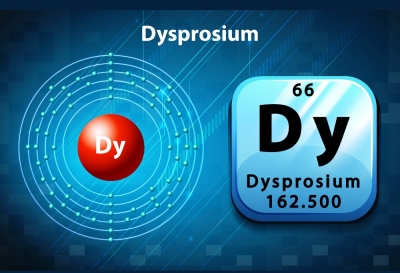
Dysprosium, atomic number 66, was discovered in 1886. French chemist Paul Emile Lecoq de Boisbaudran found the element when he separated dysprosium oxide from holmium oxide. Boisbaudran had also discovered gallium in 1875. He was also the first person to isolate samarium in 1879 using fractional separation.
Boisbaudran devised a very complicated and time-consuming procedure for the separation of dysprosium. The process had 32 precipitations of the hydroxide using ammonia, which was followed by 26 precipitations of the insoluble oxalate salt.
In this context, he named this new element dysprosium, which means ‘hard to obtain’ in Greek. The element lived up to its name for another eighty years until pure metallic dysprosium was isolated using ion-exchange chromatography in the 1950s.
One of the most important uses of dysprosium is in the manufacturing of data storage devices such as compact discs and hard discs. It is also used in medium source rare-earth lamps (MSRs), which produce an intense white light in the film industry.
Picture Credit : Google




